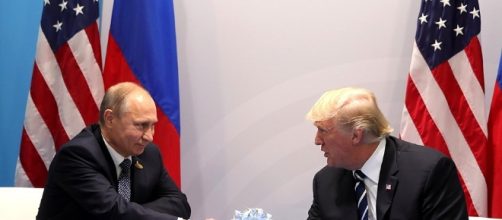The meeting between President Donald trump and Vladimir Putin at the G-20 summit was one that was long anticipated. After the preliminaries that involved Trump demanding that Putin comes clean over Russia interfering in the last election, which the Russian leader flatly denied, the two leaders got down to serious matters, such as the mess in Syria.
Why did America and Russia agree to a Syrian ceasefire?
The Syrian Civil War is complicated in that it has so many players with differing agendas. By forging a ceasefire in southwest Syria between Bashir Assad’s forces and the various rebel groups fighting to overthrow him, one complication is removed.
The no-fly zone that accompanied the deal means that Assad is not going to do something stupid, like drop chemical weapons against his enemies, that would require an American response.
The deal removes a potential cause for a conflict between the United States and Russia. Neither country wants to see their militaries fight one another directly since such would have a tendency to spiral out of control.
The ceasefire allows the United States to pursue its primary goal of eliminating ISIS in Syria. The SDF and the Kurdish forces have invested the capital of the ISIS Caliphate and is starting that process with a will.
What did the United States give up in return?
Assad stays in power, at least for the time being.
This concession is not necessarily a bad thing. As we learned in Iraq and Libya, getting rid of a dictator, no matter how evil, often results in chaos which terrorists like ISIS can turn to their advantage. However, the deal also ratifies Russia’s and, to a certain extent, Iran’s role in Syria.
What happens next?
The real problem begins once ISIS is eliminated. The fall of Raqqa will leave about 50,000 well-armed Syrians and Kurds with enemies still to fight. The Syrian Democratic Forces will still want to get rid of Assad. The Kurds will want to pursue their long-held dream of an independent Kurdistan, which is something that will enrage just about everyone, Syria, Iraq, Iran, and Turkey in the region.
Each country stands to lose if the Kurds get their own country.
Then, Syria becomes complicated again, with the added aspect that whatever number of ISIS fighters get away to take to the hills and keep up the fight, some of the foreign fighters will try to go back to their countries of origin to commit mayhem and murder. Western nations are going to have to be vigilant lest more high casualty terrorist attacks occur. Meanwhile, Russia and Iran remain to be dealt with in Syria.


